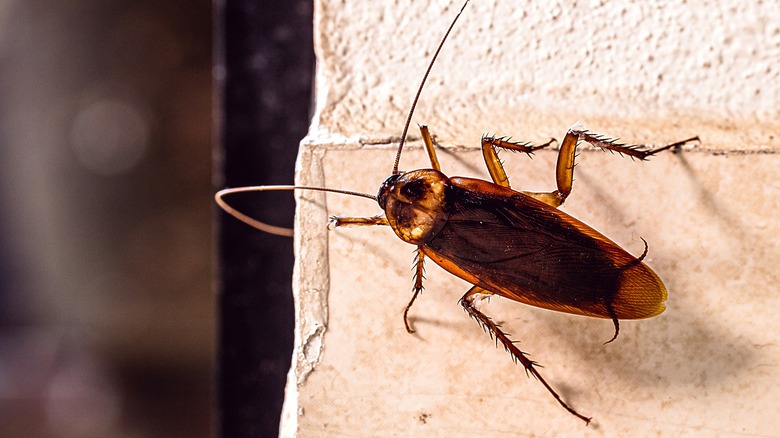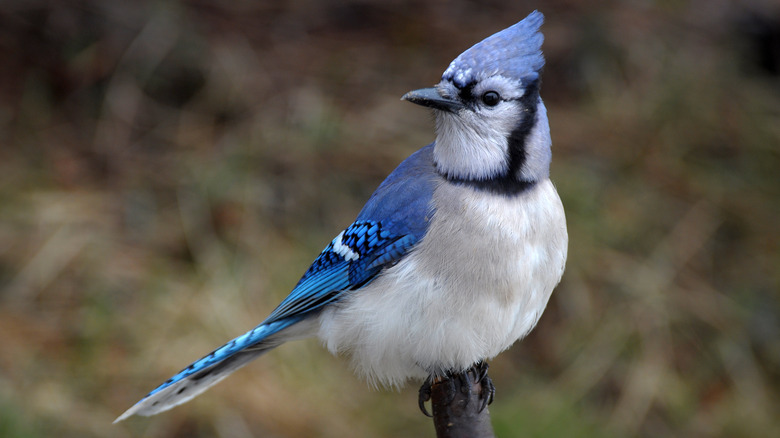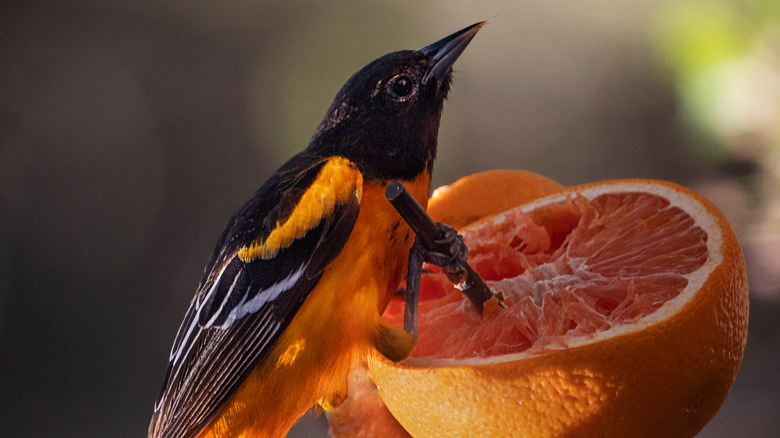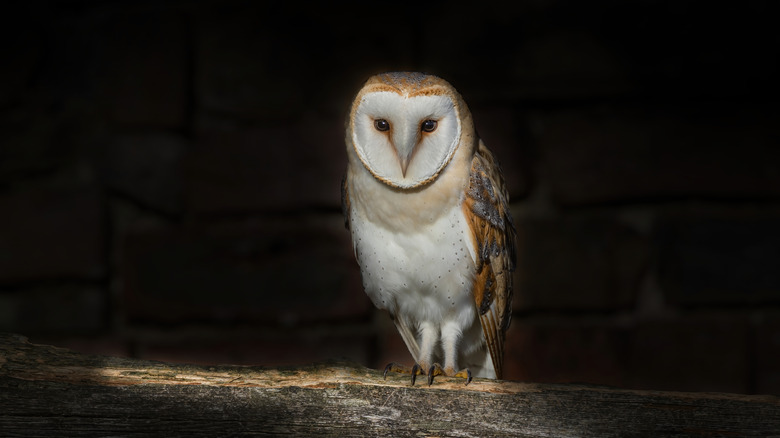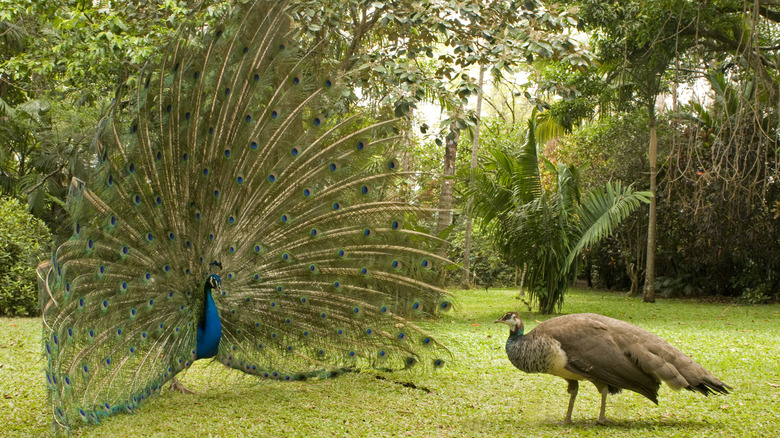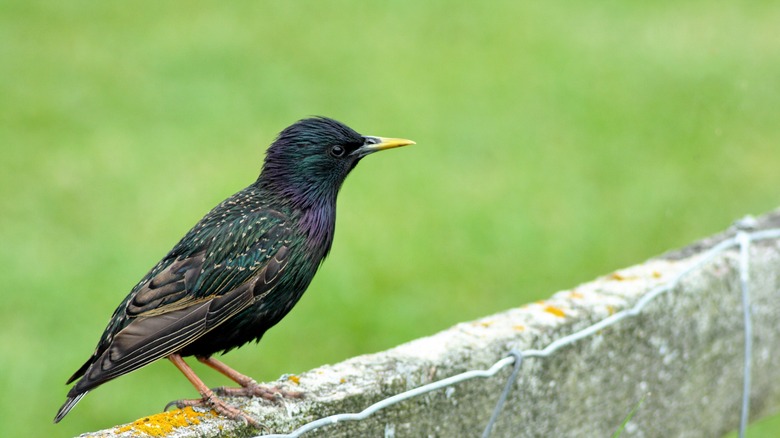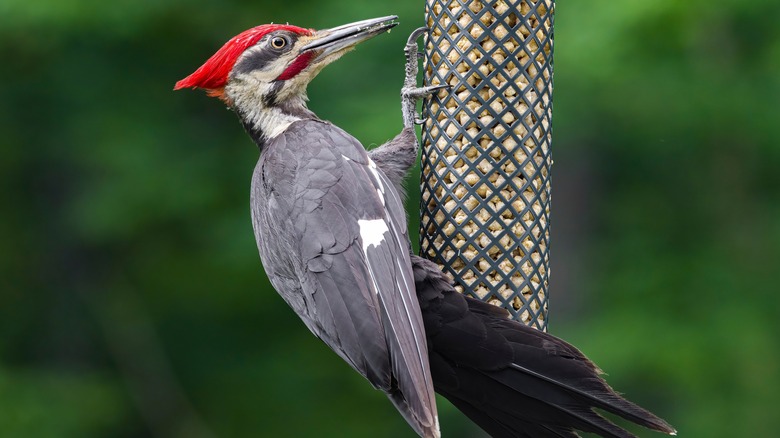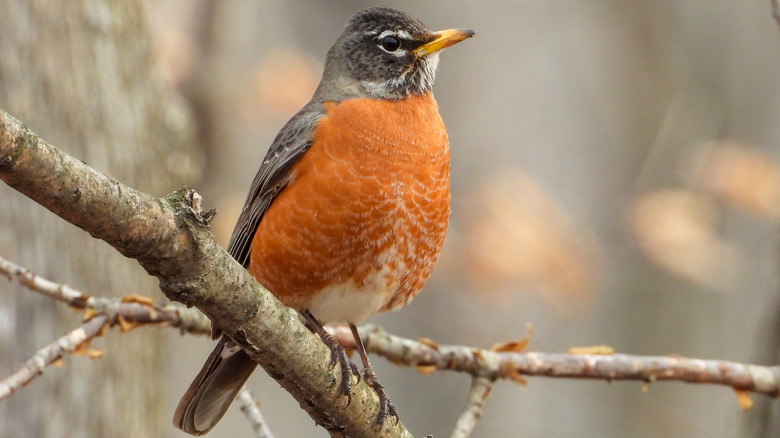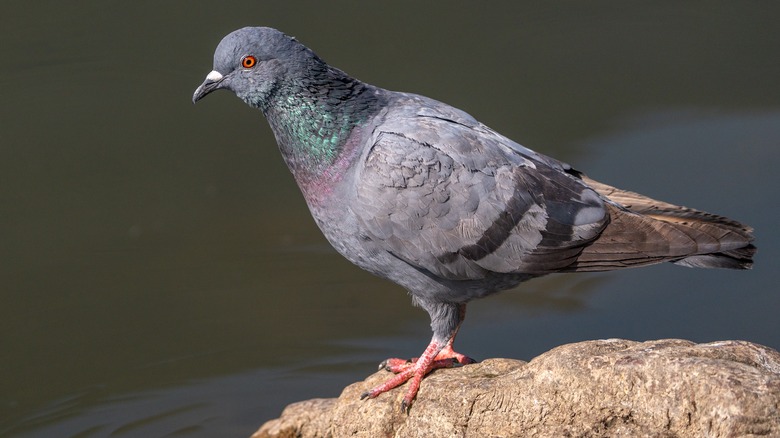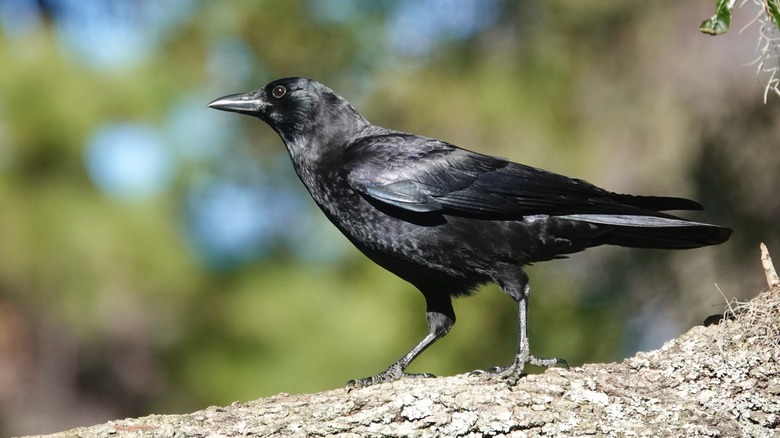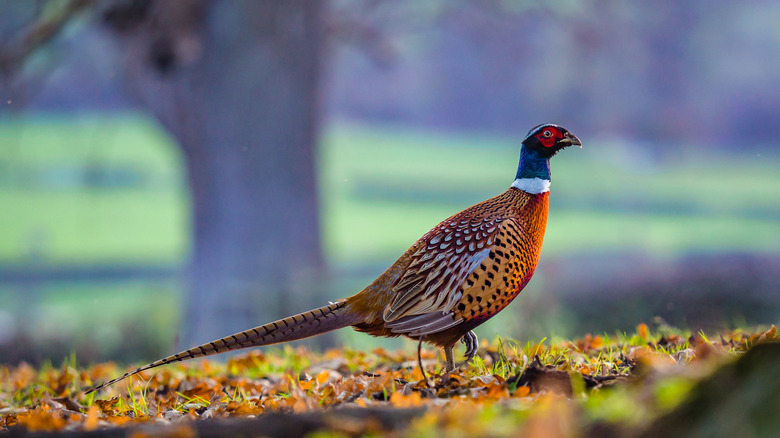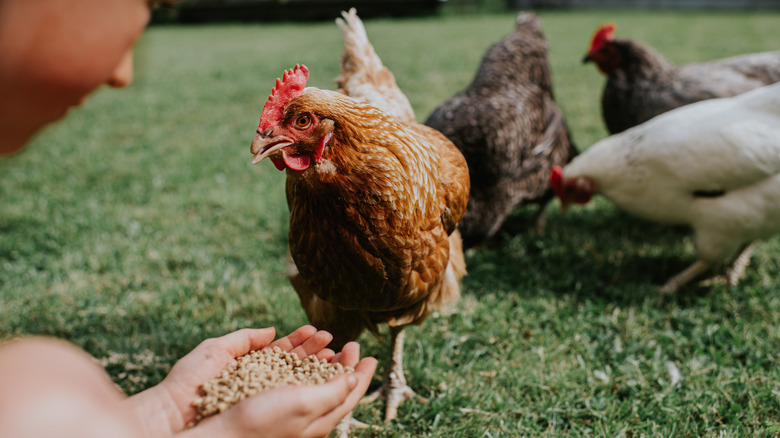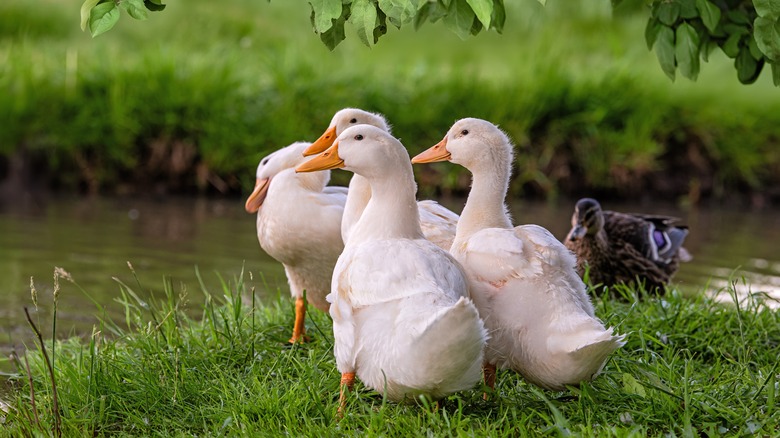Inviting These 12 Birds To Your Yard Might End Your Cockroach Problem
Did you know there are 55 different types of cockroaches living in the United States? Only a handful of those are species you might encounter around your home or garden, though. Nevertheless, one cockroach is one too many for most people since several types can trigger allergies in some individuals and can indeed spread bacteria like Salmonella and E. coli. You can try fragrant herbs to keep cockroaches out of the house if you're avoiding pesticides, but what about outdoors? Eliminating them before they make their way inside sounds like a plan worth considering. Quite a few birds snack on insects, so it makes sense that they might be able to help you with this task.
Like birds that can help you solve your wasp problem, certain insect-eating avians may also rid your yard of cockroaches. From bluejays to American robins and woodpeckers to crows, all these birds regularly eat a variety of both flying and crawling bugs. Some birds aren't all that great to have around, however, so we'll tell you about 12 that are known to dine on cockroaches, and you can decide which ones would be the most appropriate to invite into your yard.
1. Blue jays
Blue jays aren't always welcome in backyards since they can be quite loud at times, and they're also known to dive-bomb people and pets in areas where they're nesting. They will, however, eat cockroaches when they run across them–along with many other bugs, so that moves them over to the plus side when it comes to having them around. If you decide you'd like to attract some to your yard, keep a feeder stocked with unshelled peanuts, and they'll happily remove the shells themselves. Sunflower seeds are another snack blue jays enjoy finding readily available.
2. Orioles
Have an elm tree on your property? You may already be attracting Baltimore orioles to your yard since elms are among their favorite spots to nest. While they're making a home for their young, orioles will feast on many types of insects, including cockroaches, when the opportunity arises. If you live in an area where these birds tend to flock, putting fruit, like halved oranges, on a feeder can help draw them to your yard. Even if you don't have a bird feeder, sticking an orange half the end of a tree branch can work, too.
3. Barn owls
Barn owls reside in rural areas all over the United States. They're known for eating lots of nuisance animals like rodents, but they'll also dine on problematic insects like cockroaches as well. That can offer a win-win in the pesky animal and insect elimination department if you have a hollow tree on rural land near your home where they decide to nest. You can also investigate purchasing a nesting box or try your hand at building one to place inside a barn or silo as an attractive spot for these owls to make a secure home.
4. Peafowl
While keeping these large birds in captivity isn't right for everyone, free-range peacocks and peahens will indeed munch on cockroaches as part of a diet that includes things they forage, like berries and small reptiles. Very large yards or open spaces in rural areas usually make the best spots for them due to their noisy nature, and they generally do better in warmer climates since they're originally from India and Sri Lanka. They also need to be dewormed every two months, and you'll need to give them supplemental food to keep them from wandering off and looking for sustenance.
5. European starlings
Starlings are known to eat cockroaches, but they're one type of bird many people don't want to attract to their yards and gardens. Why? They tend to travel in large flocks that can raise a noisy ruckus out in your yard. However, they are amazing to watch as they form bird clouds called murmurations in the sky. Starlings also tend to destroy crops, so they're not usually welcomed by gardeners or farmers. They tend to like softer foods like suet cakes or unshelled nuts at feeders, should you decide you want to attract them.
6. Pileated woodpeckers
These wood-boring birds with familiar red crests live across North America in both rural areas and the suburbs of cities. In other words, where there are trees, there are woodpeckers. Their diet includes nuts and fruits, but insects are their favorites. Carpenter ants make up much of their diet, followed by other types of ants, but they'll dine on termites, flies, and cockroaches, among other insects. When drawing them to a yard, they're more likely to visit a backyard bird feeder to munch on suet in the cooler months but will snack on nuts and seeds occasionally.
7. American robins
American robins can be found in many parts of North America year-round. They eat lots of berries as well as insects, including earthworms and spiders. These birds have also been observed nibbling on cockroach nymphs (baby cockroaches) as well as adults. Given that fact, you may be wondering how to attract robins to your garden. Because of their limited diet, they're not usually interested in traditional bird feeders holding seeds and nuts. They're more likely to visit an open tray feeder to snack on live mealworms (available at bird supply stores) or fruit you put out for them.
8. Pigeons
Pigeons aren't typically birds that you want hanging around in your yard. Their droppings look bad, smell icky, erode surfaces, and may cause several illnesses. But it is true that they eat just about anything, including insects, so nothing will stop them from going for a cockroach when they need a meal. Should you decide to draw them to your property, using pigeon decoys is a good first step, followed by adding a water feature like a bird bath and foods such as dried cracked corn and sunflower seeds.
9. Amerian crows
Crows feed on everything from fruit to small animals, including chicks, which they snatch from the nests of other birds. They gather all types of insects from the ground, too, including cockroaches. They'll also forage in garbage cans and compost piles. Since cockroaches may also turn up in compost, a crow might even grab one while feeding there. Scarecrow festivals across America each fall exhibit the propensity to drive these birds away rather than draw them in. If you do want to attract them, though, pet food or peanuts left out in the open should do the trick.
10. Ring-necked pheasants
Pheasants, mainly known as game birds in North America, live across the northern states and the Midwest. They usually forage for food on the ground and have a wide-ranging diet, including everything from roots and berries to seeds and insects, including cockroaches. Their intake of insects increases in the summer, so if you live in an area where pheasants are present, planting trees and shrubs like crabapple, elderberry, snowberry, or chokeberry can help to attract them to your yard. They'll also eat oats, sunflower seeds, and even kitchen scraps left out for them.
11. Chickens
Many homeowners with the space (and city ordinances allowing it) keep chickens to produce fresh eggs. In this instance, it's a matter of raising them from chicks or pullets rather than just luring them to your yard. Once you have them, they will roam around pecking for insects when you let them out of their coop. They don't discriminate; their insect intake can indeed include cockroaches. However, the droppings from chicken coops are notorious for drawing roaches if they're not kept super clean. Since your goal is to eliminate these insects, this is certainly something to keep in mind.
12. Ducks
Attracting ducks can be a fun-to-watch addition to a pond near your yard or out in your garden. They eat a wide variety of foods, like fish and frogs, as they swim, but on land, they'll snatch up insects, like crickets, worms, and, yes, cockroaches. To draw wild ducks, consider adding a decoy to your pond and spots to rest, like logs and rocks around the edges. You can also consider buying baby ducks and raising them to live on your property. Either way, ducks are some of the birds that may help take care of your cockroach problem.
